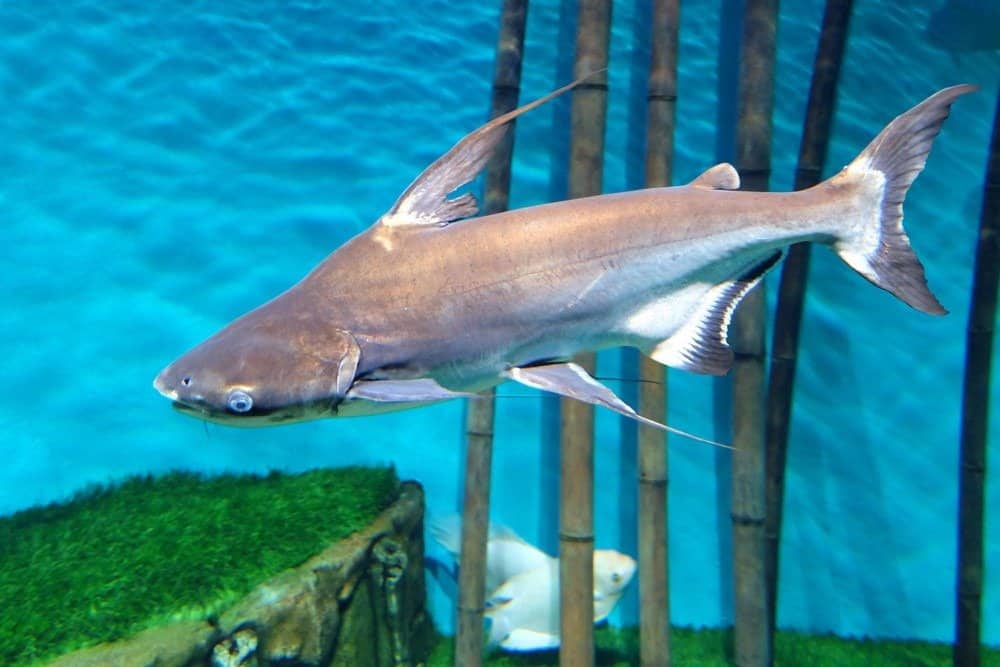Swai Fish: An Inside and Out Check the disposable fish out.
Swai fish, referred to experimentally as *Pangasianodon hypophthalmus*, is a freshwater fish local to the Mekong Stream in Southeast Asia. Throughout the past many years, it has acquired huge notoriety in worldwide business sectors because of its moderateness, gentle flavor, and flexibility in cooking. In any case, the fish has likewise been the focal point of debate with respect to its ecological effects and wellbeing suggestions. This article dives into the different parts of swai fish, including its science, market presence, dietary benefits, culinary purposes, and the discussions encompassing its cultivating practices.
Natural and biological attributes
Scientific classification and actual portrayal
Swai fish have a place in the family Pangasiidae and are frequently mistaken for their family members, the basa fish (Pangasius bocourti). They are portrayed by their smooth, scaleless bodies, wide heads, and gleaming dark skin with a white underside. Swai fish can grow up to 4 feet long and weigh as much as 97 pounds in the wild; however, cultivated swai are normally gathered at more modest sizes.
Natural surroundings and dissemination
Swai fish are local to the Mekong Waterway Bowl, which traverses a few nations, including Vietnam, Thailand, Laos, and Cambodia. They flourish in enormous, sluggish waterways and are generally adjusted to conditions with differing oxygen levels. Their normal transient way of behaving is significant for generating, as they venture out upstream to recreate.
Cultivating Practices and Ecological Worries
Hydroponics Techniques
Swai fish cultivating has turned into a critical industry, particularly in Vietnam, where the fish are brought up in enormous, freshwater lakes. These lakes are often part of incorporated cultivating frameworks that incorporate rice paddies, creating a harmonious connection between hydroponics and farming. The fish are commonly taken care of by an eating routine of rice, wheat, soy, and fish dinner.
Ecological Effect
The fast extension of swai cultivation has raised a few natural worries. One of the essential issues is the contamination brought about by the release of untreated wastewater from fish ranches into normal water bodies. This can prompt the debasement of water quality and the annihilation of sea-going environments. Also, the high thickness of fish in cultivating lakes expands the risk of sickness episodes, which can spread to wild populations.
Supportability Endeavors
To address these worries, different associations and certification bodies have created norms for supportable swai cultivation. The Hydroponics Stewardship Gathering (ASC) and the Worldwide Hydroponics Partnership’s Best Hydroponics Practices (BAP) are two conspicuous projects that confirm ranches in light of standards like ecological obligation, fish government assistance, and social responsibility. Affirmed swai ranches are expected to carry out measures to lessen contamination, further develop feed effectiveness, and guarantee others conscious treatment of the fish.
Dietary Benefits and Wellbeing Suggestions
Nourishing Profile
Swai fish are valued for their gentle flavor and sensitive surface, making them a flexible fixing in different foods. From a healthful standpoint, swai is a low-calorie, low-fat wellspring of protein. A 3-ounce serving of cooked swai gives roughly 70 calories, 15 grams of protein, and 1.5 grams of fat, with insignificant amounts of sugar. It is likewise a wellspring of fundamental supplements like vitamin B12, selenium, and omega-3 unsaturated fats; however, the levels of these supplements can fluctuate contingent upon the fish’s eating regimen and cultivating conditions.
Wellbeing Concerns
Notwithstanding its nourishing advantages, swai fish have been dependent upon examination because of worries about pollution and anti-toxin use in cultivation. Reports have featured occurrences of swai being debased with unsafe substances like heavy metals, pesticides, and anti-toxins. These foreign substances can present wellbeing dangers to buyers, prompting stricter guidelines and expanded testing of imported swai in different nations.
Culinary Purposes and Notoriety
Worldwide Market Presence
Swai fish have acquired ubiquity in global business sectors, especially in the US and Europe. Its moderateness and flexibility make it an alluring choice for customers and gourmet experts alike. In the US, swai is often sold as a less expensive option in contrast to more costly white fish like cod and haddock. The fish is accessible in different structures, including filets, steaks, and frozen or new entire fish.
Culinary Applications
Swai’s gentle flavor and delicate surface lend themselves well to different culinary arrangements. It tends to be prepared, barbecued, broiled, or steamed, and is generally utilized in dishes like fish tacos, fried fish and French fries, and Asian-propelled recipes like sautés and curries. The fish promptly retains flavors from marinades and sauces, making it a flexible fixing in both Western and Asian cooking styles.
Contents and Shopper Insight
Mislabeling and Extortion
One of the significant contentions encompassing swai fish is the issue of mislabeling. Swai is now and then sold under misdirected names, for example, “Asian catfish” or “basa,” which can confound buyers and lead to out-of-line rivalry with other fish species. Administrative organizations in different nations have done whatever it takes to resolve this issue by implementing stricter naming prerequisites and directing standard assessments.
Moral and social worries
The fast development of the swai cultivation industry has additionally raised moral and social worries. Work rehearsals in some Swai ranches have been reprimanded for unfortunate working circumstances and lacking wages. Besides, the effect of enormous-scale hydroponics on nearby networks and conventional fishing rehearsals has been a subject of discussion. Endeavors to further develop straightforwardness and social obligation in the business are progressing, with some accreditation programs consolidating measures connected with laborer government assistance and local area commitment.
Future Patterns and Prospects
Developments in hydroponics
Progressions in hydroponics innovation and practices hold a guarantee for tending to a portion of the difficulties related to swai cultivating. Advancements, for example, recycling hydroponics frameworks (RAS), which reuse water inside the cultivating framework, can assist with decreasing natural effects and further developing biosecurity. Furthermore, investigation into elective feed fixings, for example, bug feast and plant-based proteins, intends to lessen dependence on fish dinner and advance maintainability.
Shopper Mindfulness and Request
As shoppers become more mindful of the ecological and moral ramifications of their food decisions, interest in economically cultivated swai is probably going to increase. Schooling and effort endeavors by associations and accreditation bodies can assist with advising shoppers about the advantages of picking ensured SWAI items. Retailers and foodservice suppliers likewise assume a critical role in advancing practical choices and guaranteeing straightforwardness in the production network.
End
Swai fish has arisen as a famous and reasonable fish choice in worldwide business sectors; however, its ascent has not been without discussion. The natural effects of swai cultivation, worries about defilement, and moral issues connected with work rehearsals are huge difficulties that the business should address. Nonetheless, with headways in hydroponics innovation and expanded shopper mindfulness, there is potential for more feasible and capable creation of swai fish. By supporting affirmed homesteads and pursuing informed decisions, customers can appreciate swai fish while adding to the maintainability of the fish business.



























+ There are no comments
Add yours